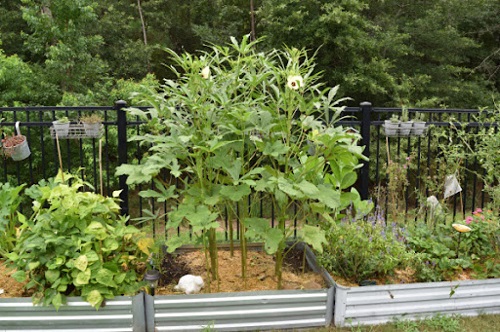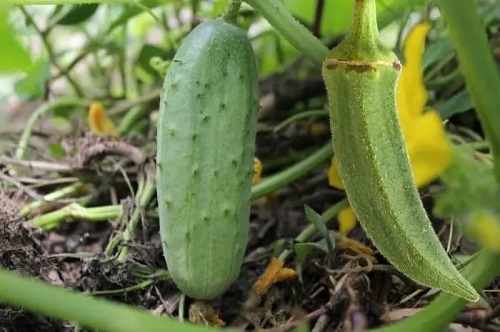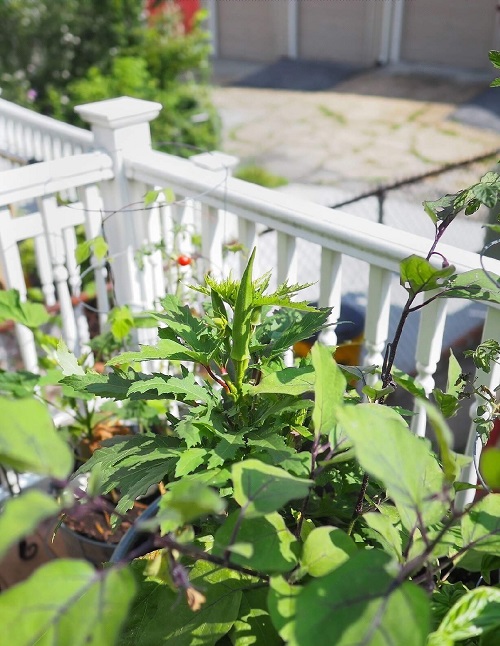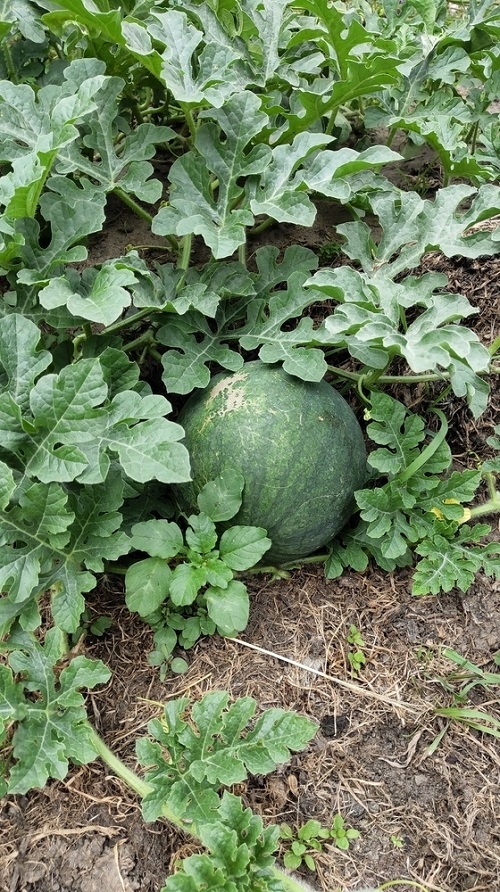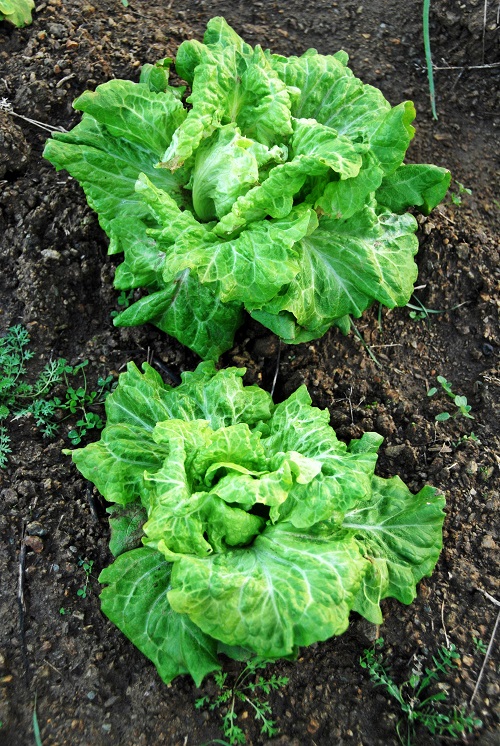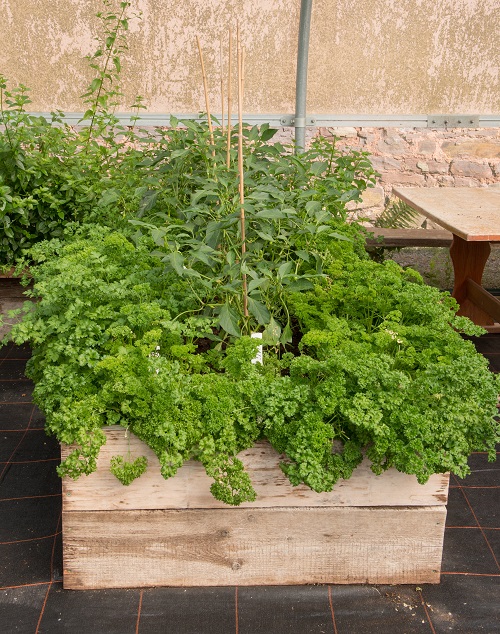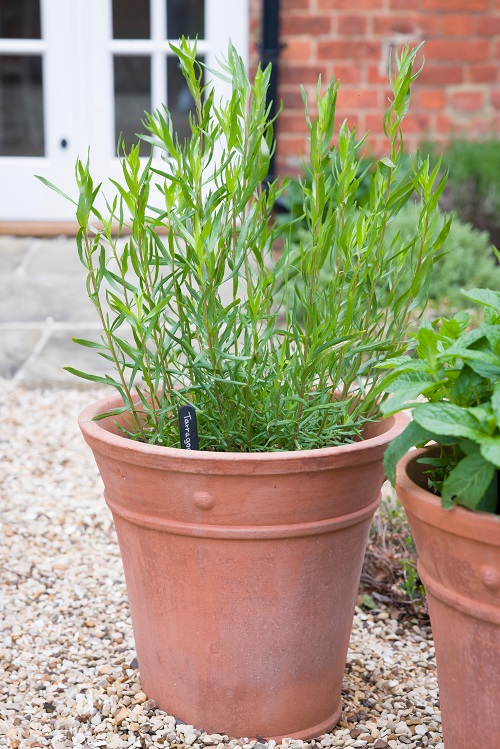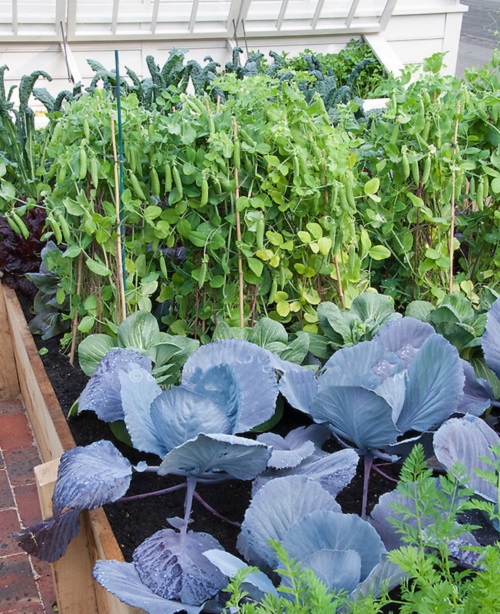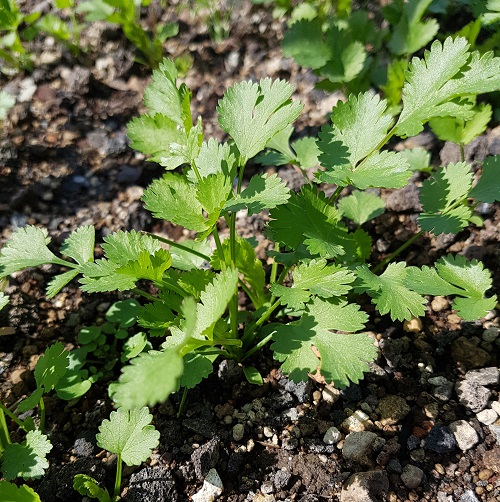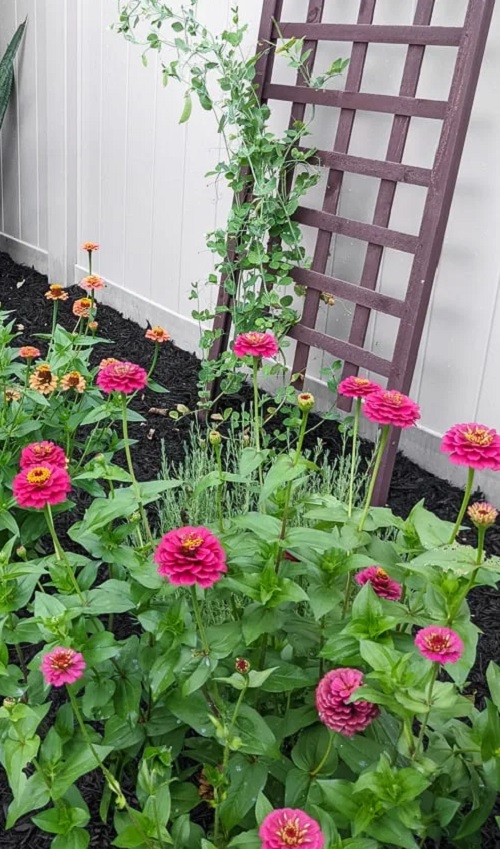Check out the Best Companion Plants for Okra to help you with a plentiful harvest! This is a great way to ensure a productive garden.
This warm-season vegetable is not only loved for its delicious pods, but it also has many benefits. However, like all plants, okra can help from the presence of other plants in the garden. In this article, you will explore some of the Best Companion Plants for Okra.
Best Companion Plants for Okra
1. Cucumber
Botanical Name: Cucumis sativus
USDA Zones: 3-8
Growing cucumber and okra together can be a great way to maximize your garden space, attract beneficial insects, and diversify your harvest.
2. Basil
Botanical Name: Ocimum basilicum
USDA Zones: 10-11
Planting basil alongside your okra is advantageous. The potent aroma of basil acts as a natural repellent against various pests that typically afflict okra, such as flea beetles, stinkbugs, spider mites, aphids, and whiteflies. Additionally, the towering stature of okra, reaching up to six feet, offers some shelter for this delicate herb during scorching summer days.
Look at the Basil Companion Plants
3. Melons
Botanical Name: Cucumis melo
USDA Zones: 2-11
Melons make excellent companions for okra, similar to cucumbers, as they both thrive in sunny and well-watered conditions. Position them to the east of the okra to capitalize on morning sunlight or to the west for afternoon exposure, ensuring ample space for their vine growth.
4. Peppers

Botanical Name: Capsicum
USDA Zones: 8-11
Peppers will deter cabbage worms, which can be harmful to your okra plants. Hence, planting them together can be beneficial.
5. Lettuce
Botanical Name: Lactuca sativa
USDA Zones: 2a – 11b
Lettuce plants have a low, compact growth habit, while okra plants have a more upright growth pattern. When these two plants are grown together, the lettuce can grow in the shade of the taller okra plants, providing them with much-needed relief from the hot sun.
In addition to space optimization, growing lettuce and okra together can also improve soil health. Okra has the ability to improve soil fertility by fixing nitrogen in the soil.
6. Parsley
Botanical Name: Petroselinum crispum
USDA Zones: 3-9
Parsley can act as a natural mulch, as its leaves keep on falling, keeping the soil moist and reducing the number of weeds. The okra will also benefit from the shade the parsley provides, allowing it to grow faster.
Additionally, the deep roots of okra can help aerate the soil, making them great companions for parsley.
7. Tarragon
Botanical Name: Artemisia dracunculus
USDA Zones: 4-9
Tarragon is a relatively low-maintenance herb that does not require much space. Tarragon can help repel certain pests that can harm okra plants, making them a natural companion in the garden.
8. Cosmos
Botanical Name: Cosmos sulphureus
USDA Zones: 2-11
Cosmos are popular for their bright and colorful flowers, while okra is loved for its delicious and nutritious pods.
When planted together, cosmos and okra can create a stunning visual display while also providing abundant harvest, maximizing space, and enhancing soil health.
9. Peas
Botanical Name: Pisum sativum
USDA Zones: 3-11
Peas are a cool-season crop that thrives in the early spring and fall, while okra is a warm-season crop that prefers hot and humid weather.
Interestingly, by planting these two vegetables together, you can sway their growing seasons and harvests, ensuring a continuous supply of fresh produce throughout the growing season.
10. Chives
Botanical Name: Allium schoenoprasum
USDA Zones: 3-10
Chives are a member of the onion family, and when grown together, they can help repel certain pests that can damage okra plants, such as aphids and spider mites.
Chives can also attract beneficial insects like bees and butterflies, which can help pollinate the okra plants and increase yields.
11. Cilantro
Botanical Name: Coriandrum sativum
USDA Zones: 8-11
Growing cilantro and okra together can be a rewarding and efficient way to grow two different plants in the same space. Both have different root depths – which means both plants can coexist without competing for nutrients and water.
Check out the Best Cilantro Companion Plants
12. Zinnias
Botanical Name: Zinnia elegans
USDA Zones: 3-10
Zinnias attract pollinators like bees and butterflies, which can help to increase the yield of your okra plants.
Additionally, zinnias are known to repel pests like aphids and spider mites, which can damage your okra plants.
13. Sunflowers
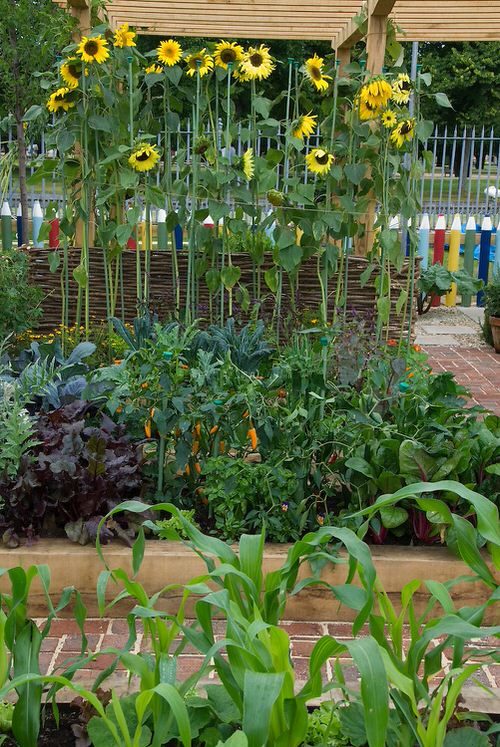
Botanical Name: Helianthus
USDA Zones: 4-9
Planting sunflowers near okra can help to attract beneficial insects such as ladybugs and can also provide nutrients to the soil.


